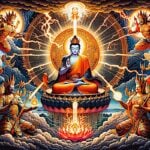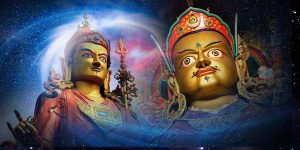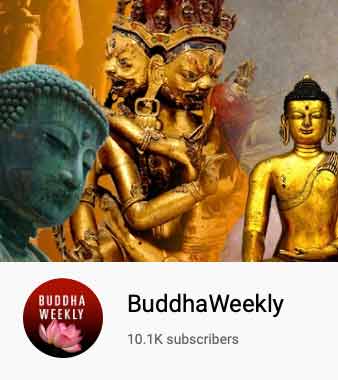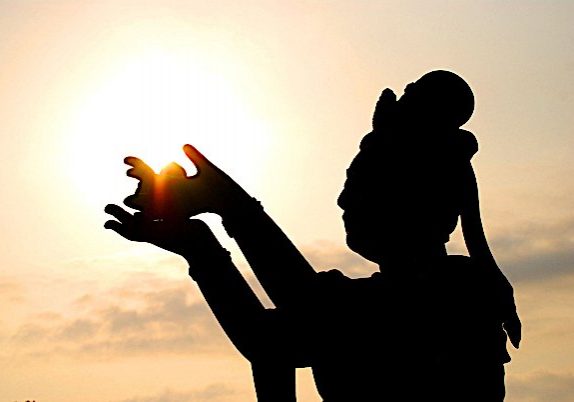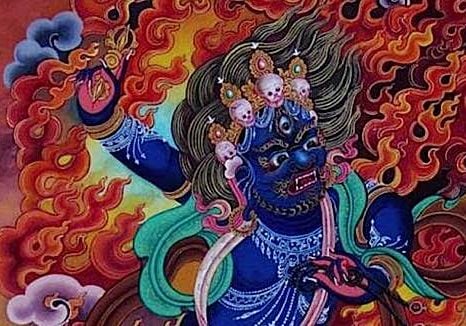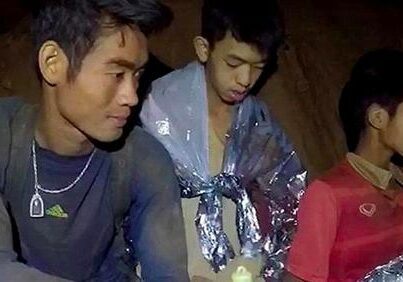Bodhisattvas
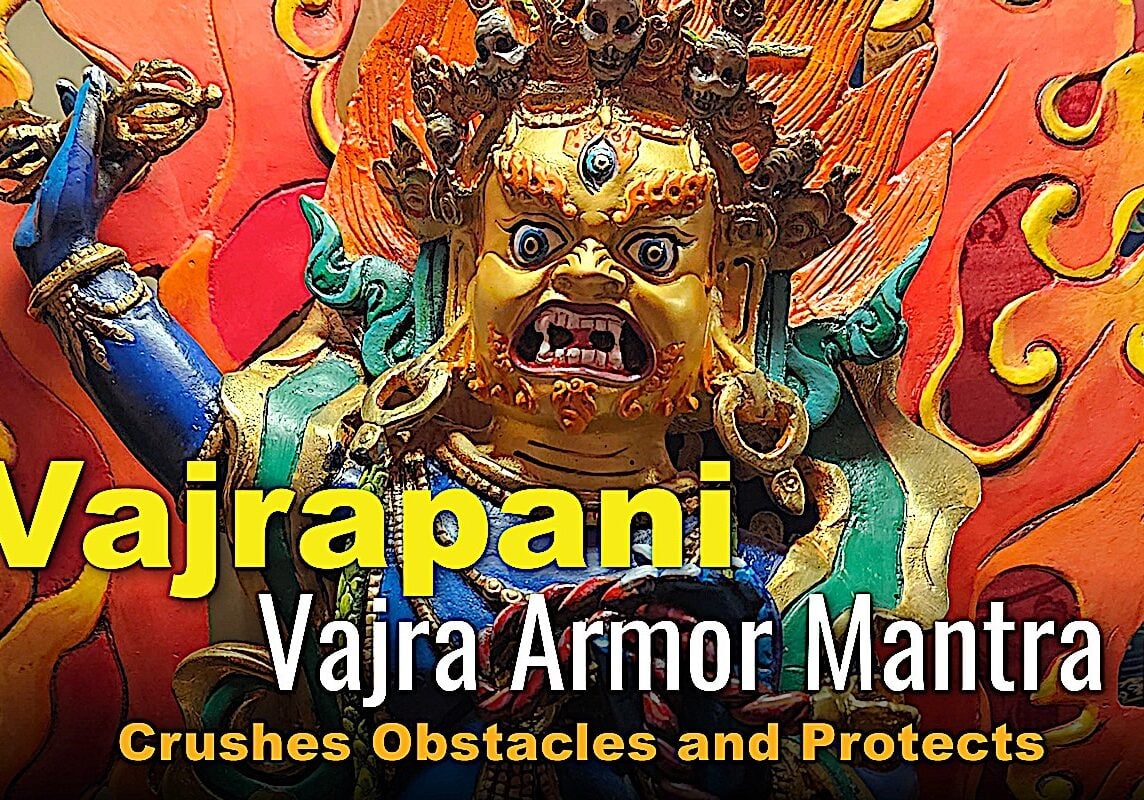
VIDEO: Vajrapani Vajra Armor Mantra: Supreme Protection of Dorje Godrab Vajrakavaca from Padmasambhava

Samantabhadra’s The King of Prayers is the ultimate Buddhist practice how-to and itself a complete practice
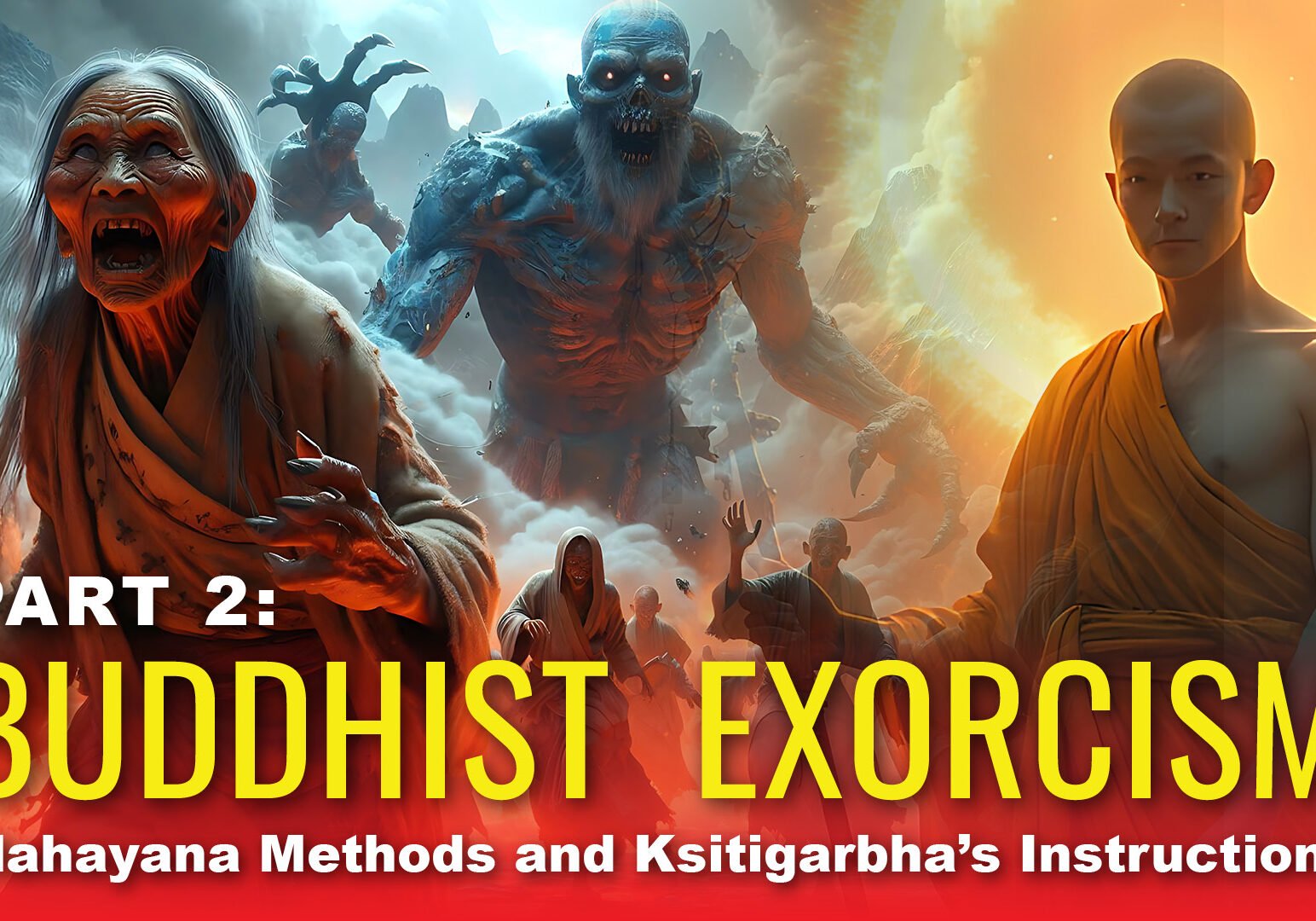
Video: Buddhist Exorcism: Kshitigarbha’s Instruction: Demon Hunters Part 2 with Dharanis and Mantras

Lama Zopa Rinpoche and other teachers recommend Kṣitigarbha mantra and practice for times of disaster, especially hurricane and earthquake, because of the great Bodhisattva’s vow

Chintachakra White Wish-Granting Wheel Tara: The All-in-One Mother of Buddhas in Vajrayana Buddhism – Her Significance, Mantra and Why Her Practice is Essential
Bodhisattvas
/
Buddha
/
Buddhist Practices
/
Dakini
/
Dakini Wisdom
/
Deities
/
Dharma
/
Mahayana
/
Mantra
/
Meditation
/
Tantra
/
Tara

Tara’s Great Dharani Supreme of all Mantras –with Music version– and the Sutra of Tara Who Protects from the Eight Fears: in Tara’s Own Words

Avalokiteshvara’s Renunciation Day! Guan Shi Yin Avalokiteshvara’s 3 Sacred Days Are Birthday, Renunciation and Enlightenment: “Most Widely Beloved Buddhist Divinity”

The 8 Great Bodhisattvas and the 8 Great Qualities of Buddha; 8 Great Mantras and Why We Need These Qualities

Ushnisha Vijaya Dharani Overcomes Six Types of Suffering, Conquering the Lord of Death: Supreme in Six Realms

Boundless Heroine Tara: Bodhisattva, Mother, Saviour, Friend: Stories of Rescues and a Sadhana by Marpa the Translator

Limitless Tara, Beyond the Green: Mother of all the Buddhas, Goddess of Many Colors, Consort of Buddhas, Wisdom Mother, Action Hero…
Bodhisattvas
/
Buddha
/
Dakini
/
Dakini Wisdom
/
Deities
/
Dharma
/
Mahayana
/
Mantra
/
Tara
/
Vajrayana

Wangdu Great Cloud of Blessings: the 9 Magnetizing Activity Yidams of the Padma Buddha family: Amitabha, Kurukulla, Chenrezig, Hayagriva, Vajrayogini, Vajradharma, Padmaraja, Chakrasamvara, Guhyajnana

April 22 is Earth Day, which makes it Tara’s day: nourishing, caring, mother-earth hands of Tara of the Khadira Fragrant Forest

Why is “Most loved” Kṣitigarbha (Jizo) “Essence of Earth” Bodhisattva revered and beloved in Mahayana Buddhism as the “closest” of all the Enlightened Ones

Maitreya Bodhisattva, the Future Buddha — the face of Love; the loving friend of all sentient beings

Avalokiteshvara’s 108 main forms: one for each mala bead and one for each poison — the many faces of compassion
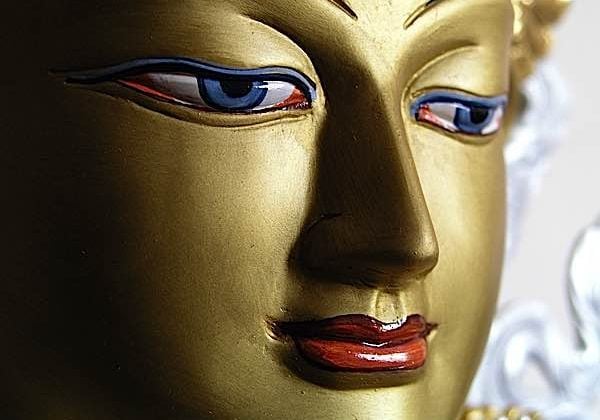
Avalokitesvara compassion practices can “enhance treatment of anxiety, depression, trauma” say some scientists and clinicians. For the rest of us, his compassion brings us closer to bliss and wisdom.

“What Bodhisattvas Do” 37 Practices of All Bodhisattvas: the Total Path, a Daily Recitation, a Perfect Buddhist Practice and Lifestyle

Celebrating Loving Kindness on Maitreya Day: Significance and Traditional Practices to Start the Lunar New Year Celebrating the Buddha-to-Come

Video: Hayagriva’s Powerful Mantra 1 Hour of Chanting: King of Protections, Mantra for troubled times

Green Jambhala and Wisdom Dakini: The Karma Family Activity of Prosperity, aspects of Tara and Amoghasiddhi Buddha

Stream of Gems Vasudhārā: The Buddhist Tara Goddess of Wealth and Prosperity; Mother Earth Who Witnessed Buddha’s Enlightenment

Video: Samantabhadra’s King of All Prayers Dharani chanted in Sanskrit — a complete Buddhist practice with all seven limbs

Marichi, Buddhist Goddess of Golden Light, Destroyer of Demons, Evil and Obstacles, 21st Tara: Video short documentary

Devoted to compassion: How the practice of Guanyin Avalokiteshvara is powerful, healing, liberating and precious

Sitatapatra or Dukkar — the ultimate protective Bodhisattva Goddess, form of Mother Tara — 1000 arms or 2 arms, she is “Aparajita” the Undefeatable One

“Mind Jewel” Green Tara – a Highest Yoga Tantra practice of Chittamani Tara (Cittamani), Mother of all the Buddhas
Bodhisattvas
/
Buddha
/
Deities
/
Mahayana
/
Tantra
/
Tara
/
Vajrayana
/
What the Buddhist Teachers Say

The eleven aspects of Manjushri — kind, wrathful, protective, teaching and “beastly” — white, yellow, black; father, mother, spiritual child
Bodhisattvas
/
Buddha
/
Buddhist Practices
/
Deities
/
Dharma
/
Mahayana
/
Mantra
/
Tantra
/
Vajrayana

Four heroic incarnations of Ksitigarbha, the “Earth Store” Bodhisattva — unfailing, never-tiring compassion

Shakyamuni Buddha, born to “warrior caste” taught how to be a fearless Buddhist: overcoming ignorance and suffering with the “weapons” of wisdom and compassion

Prajnaparamita Yum Chenmo, the Face of Perfection: Wisdom Personified, “Emptiness is Form” Manifested: Great Mother of Wisdom

Three Great Bodhisattvas of Wisdom, Compassion, and Power — Manjushri, Avalokiteshvara and Vajrapani.

Pacifier of War and Strife, Avalokiteshvara Guanyin Chenrezig — Bodhisattva delivering us from every danger; Chapter 25 Lotus Sutra

Healing Parnashavari — Tara’s Healing emanation: specialist in Contagious Disease, Illness, Pandemic: How to practice her mantra and sadhana
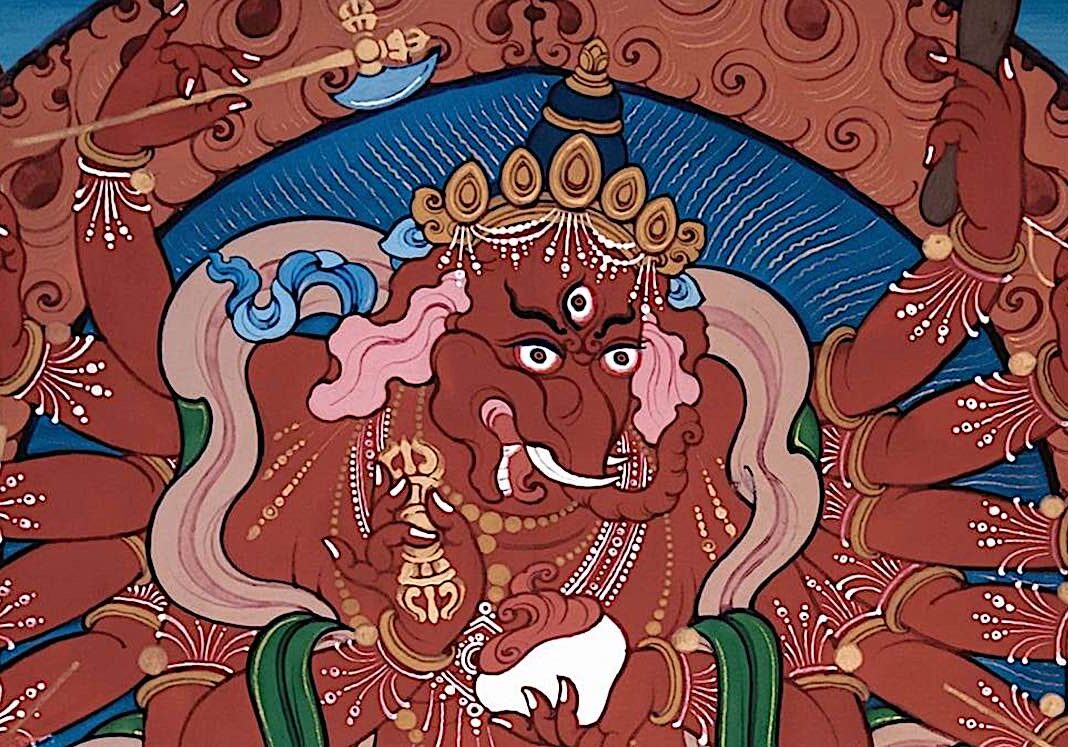
Buddhist Ganesha: popular Ganapati’s many forms include enlightened Yidam, protector, and “bringer of success”…

Chenrezig: the many faces of Avalokiteshvara’s compassion — sometimes we need a father or mother, sometimes a friend, sometimes a warrior

Youthful Manjushri: the flowering of wisdom; the gentle Buddha who cuts through ignorance with his flaming sword

Veneration Practice and Devotion According to the Ksitigarbha Sutra: Why Devotion is Not Superstition
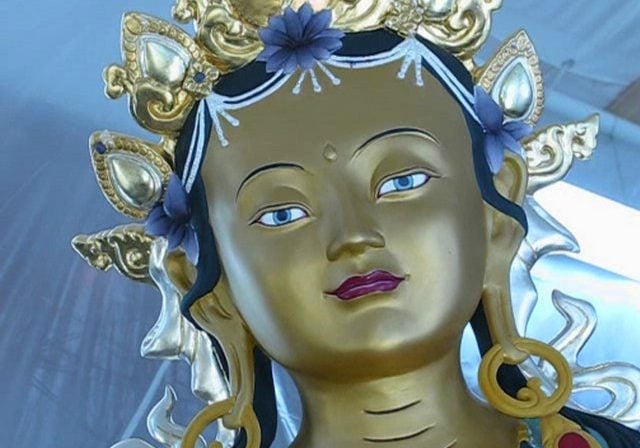
Mama Buddha Tara: Compassionate Action; Stories of Green Tara the Rescuer — How She Can Help You
Bodhisattvas
/
Buddha
/
Buddhist Practices
/
Dakini
/
Dakini Wisdom
/
Deities
/
Mahayana
/
Mantra
/
Tantra
/
Tara
/
Vajrayana
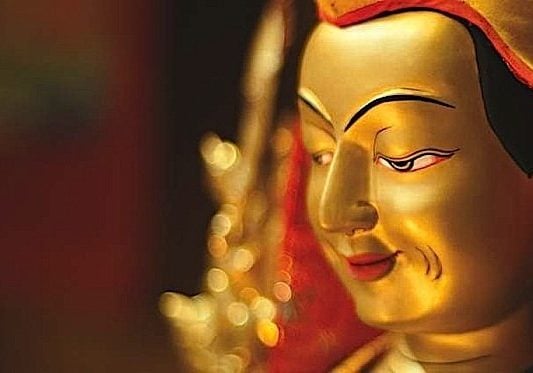
Lama Tsongkhapa: A Short, Powerful Practice Helps Bring Compassion, Wisdom, Good Fortune, and Healing

Avalokiteshvara’s Ten Prayers for happiness and well-being of all sentient beings chanted by Khenpo Pemo Choephel Rinpoche

Is there room for the supernatural in Western Buddhism? Four sutra views of magic and metaphysical and why a supernatural perspective helps “see beyond ordinary perception”

Part 3: 21 Taras of Mahasidda Suryagupta: after curing him of leprosy, Tara taught him Her Twenty-One forms
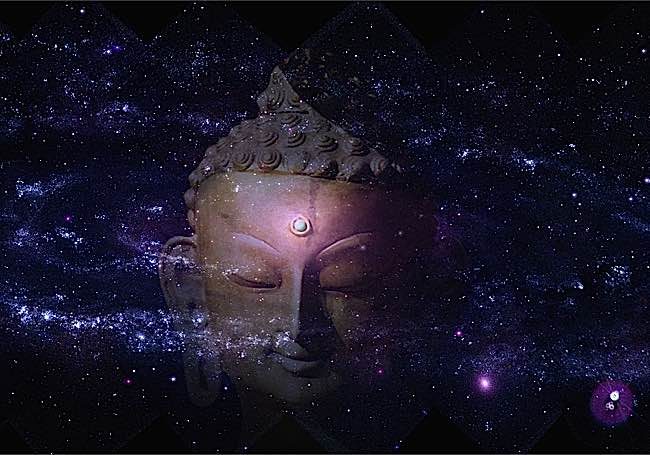
“The Mind of One Buddha is the Mind of All Buddhas”; How “Jewel Collection Refuge” Can Help You Manage Your Commitments to Multiple Practices and Yidams
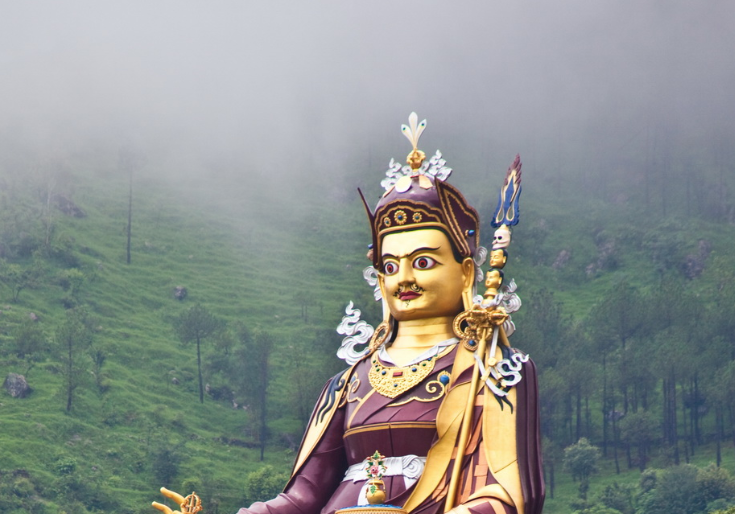
Tantra Helps “Stop Ordinary Perception”, and is the Fast Path to Enlightenment. But How Do Modern Buddhists Relate to Deities?
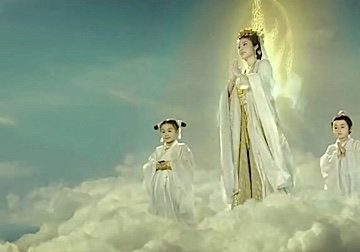
Guan Shi Yin and the ten great protections of the Goddess of Mercy Kuanyin: Avalokiteshvara, Bodhisattva of Compassion

Video: chanting Green Tara by Yoko Dharma; from our guided meditation series, Green Tara images and mantra to empower your practice



